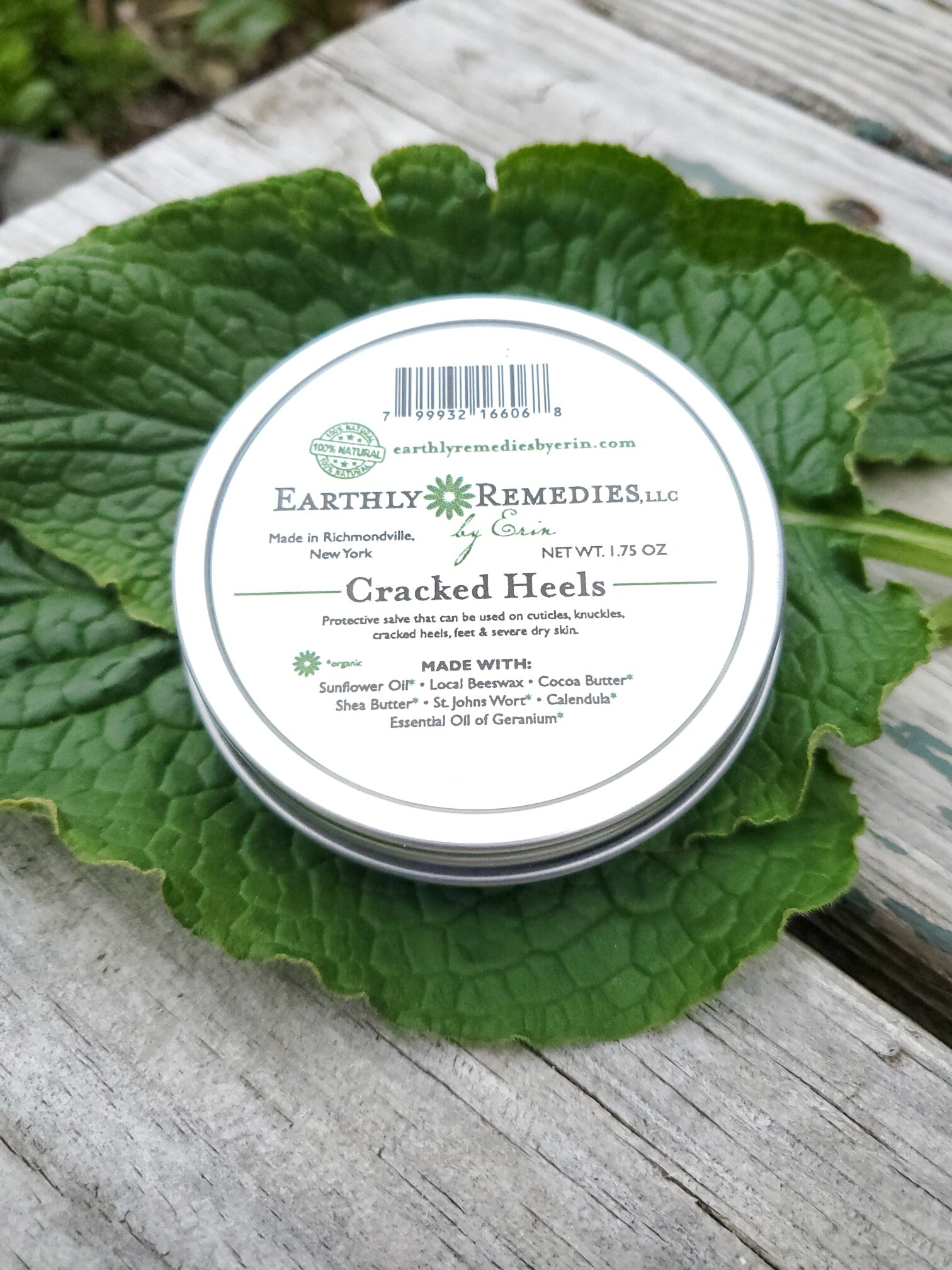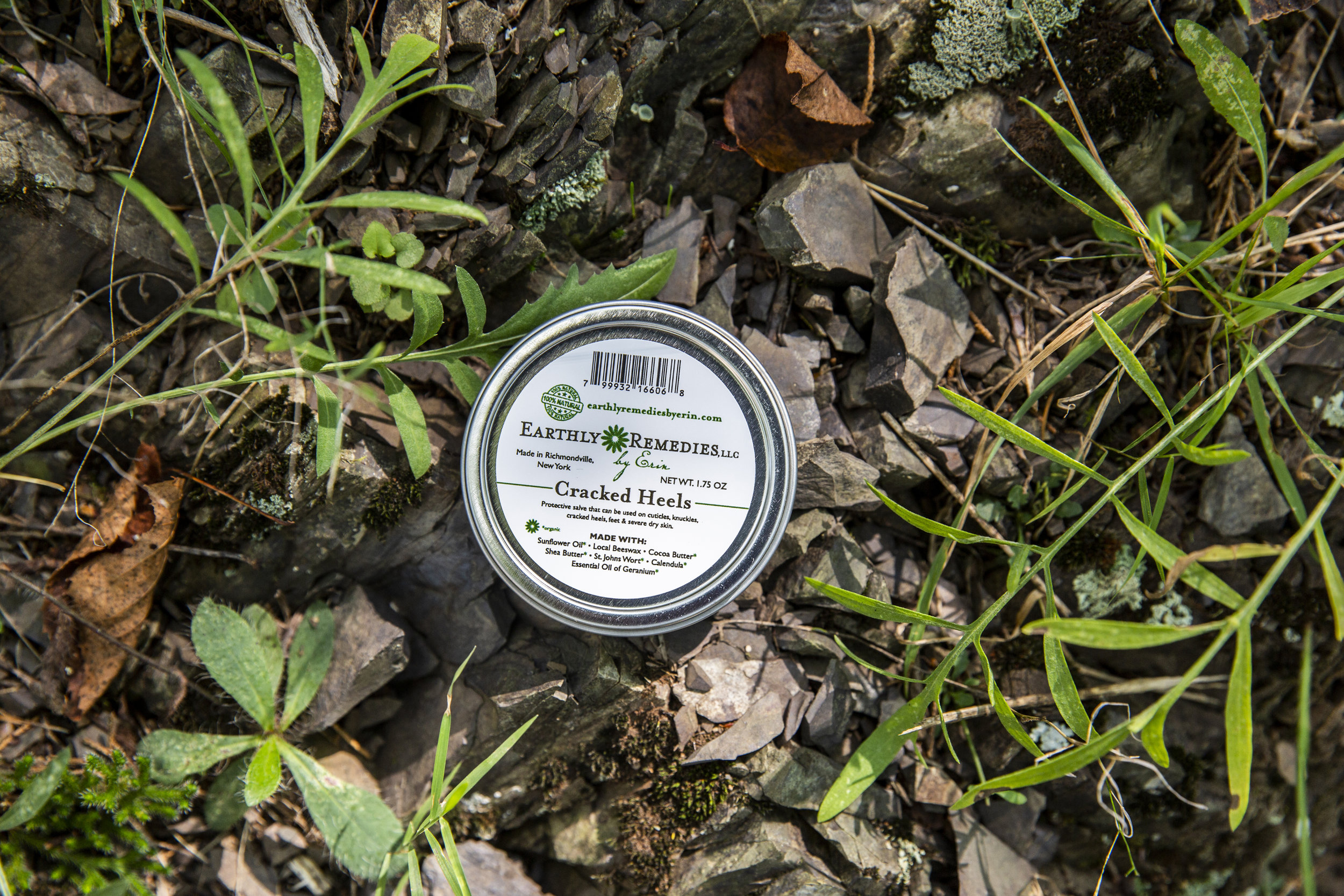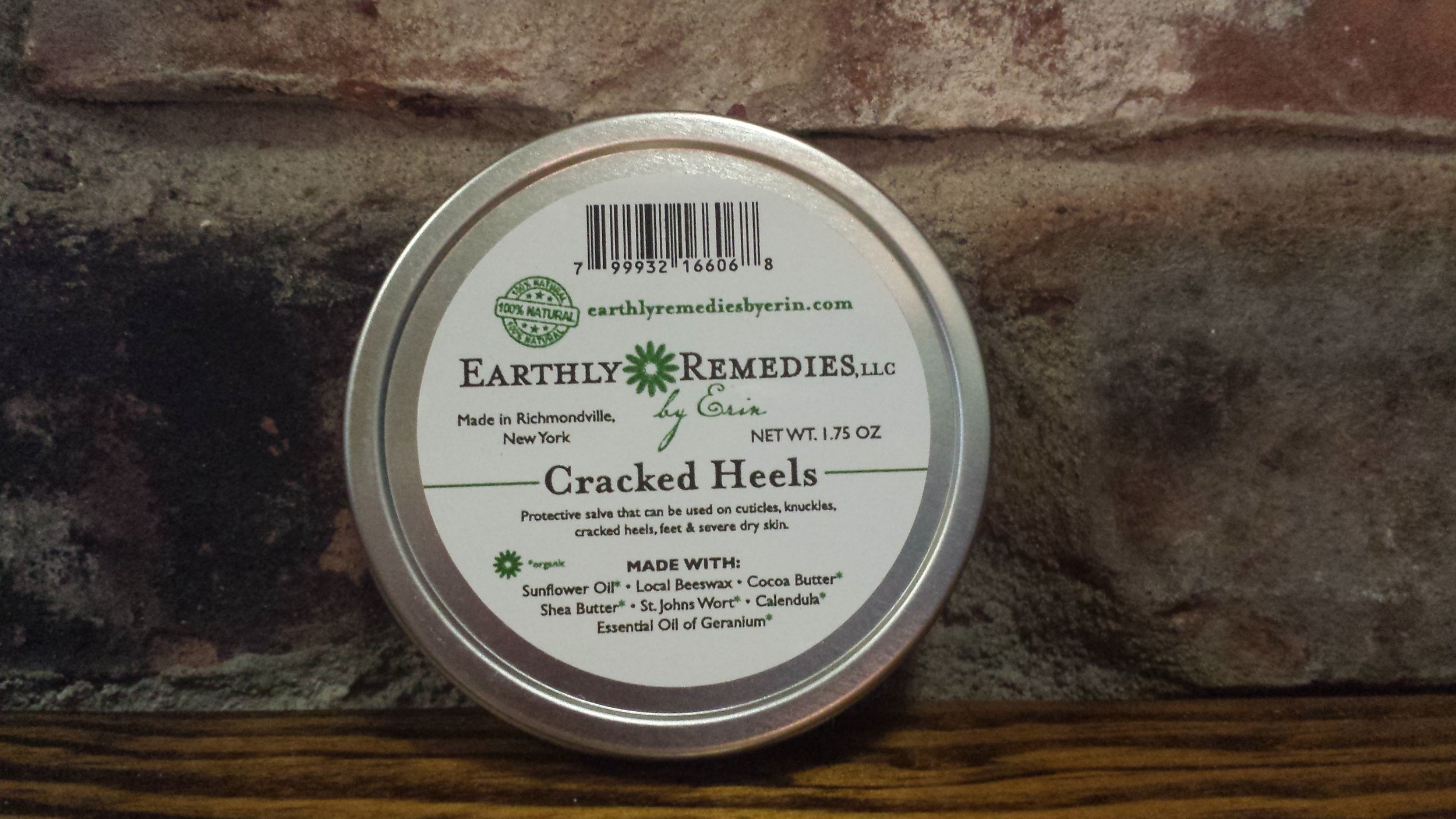Cracked Heels Salve




Cracked Heels Salve
Can be used on your feet and heels. Helps to heal splits and cracked cuticles on your hands. Helps with severe drying cracking heels on your feet, rub on before bed and put some socks on to let the salve soak in. A great salve for anyone who work outside or just has rough hands. Due to the St. John’s wort in the salve, it can also be used on nerve pain.
Made with organic sunflower oil, local beeswax, organic shea butter, organic cocoa butter, organic St. john’s wort, organic calendula, and organic geranium oil.
Calendula is considered a vulnerary, anti-inflammatory, and astringent herb which makes it great to use for wound healing. It helps to speed up the healing process, helps with stagnation of fluid and inflammation, helps prevent infection and bacterial growth. Matthew Wood talks about how it heals from the inside out. Calendula has long been used to mend cuts, burns, bites, sprains, rashes, and sunburn. It is good for cooling and soothing the skin. It has Antibacterial, antiviral, and antifungal properties. Sajah Popham talks about using calendula for lacerations and puncture wounds. It not only helps heal and prevent infections, but it starts the healing process from beneath and helps to supply the tissue with the lymphatic fluid that it needs. Other herbs that blend well with calendula for wound healing are St. johns’ wort and yarrow.
Some of St. John’s Wort’s herbal actions that make it so beneficial for external uses are its anti-inflammatory properties, it is considered a vulnerary (which means it has wound healing abilities), it has antimicrobial properties (which also makes it a good choice for wound healing), and it is an antispasmodic, antiseptic, astringent, and analgesic as well.
St. John’s Wort oil that can be used for so many things. For those with neuropathy you can just massage the into the area where you have the nerve damage or nerve pain - some find relief from sciatica. In my opinion the oil should be used daily when using it for nerve damage. St. John’s Wort has strong rejuvenating abilities on the nerves both externally and internally (if you are interested in using St. John’s Wort internally, I highly recommend talking to a clinical herbalist and/or your doctor especially if you are taking any medications).
St. John’s Wort oil can also be used on wounds, cuts, abrasions, bruises, sprains, shingles, and cold sores. I think what I love so much about St. John’s Wort oil is that it works rather quickly as a pain reliever. I have seen some good results when using it for cold sores and on shingles for the rash and pain. You have two things working in your favor: its ability to help restore your nerves and its anti-inflammatory properties.
You can use St. johns wort on your face to help with aging spots, sun damage, lines, and wrinkles. I would use it in the morning to benefit from any SPF properties that it has. I wouldn’t depend on St. John’s wort oil to provide you with all your sun protection though - one should still investigate other sunscreen alternatives or wearing a hat. I also love using St. John’s Wort oil on my lips as it just helps to heal if they are dry and split
Please Note that all salves and creams will melt on sunny days if left in direct sunlight, in a car, near a heat source, and sometimes during shipping. If this happens you can mix them up and place them in refrigerator for a little while so they will harden back up.

